
Orbital

Vitreous Detachment
This was from a 52 year old male with a recent surgical history of vitreous detachment that became a retinal detachment. He presented to the emergency room for vision changes in same eye after an object fell and hit his head. Ocular ultrasound was performed at the bedside which revealed a new vitreous detachment. Important to note here that it is crucial to fan/tilt through the entire eye, making sure to visualize the optic nerve in order to differentiate between a vitreous and retinal detachment. In this case, notice how the lesion spotted in the chamber does not connect to the optic nerve, which is consistent with a vitreous detachment.
Dr. Christopher Paulo, DO, PGY-1
Riverside Regional Medical Center Emergency Medicine Program (Newport News, VA)

Retinal Detachment
Retinal Detachment.
Francisco Norman
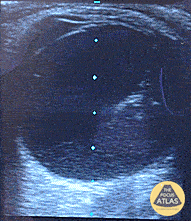
Posterior Vitreous Hemorrhage
Posterior Vitreous Hemorrhage
Painless visual field cut with position change. Posterior vitreous hemorrhage with organization and dynamic movement gong over the top of the optic nerve, but not involving it to suggest retinal detachment.
Dr. Dustin Morrow
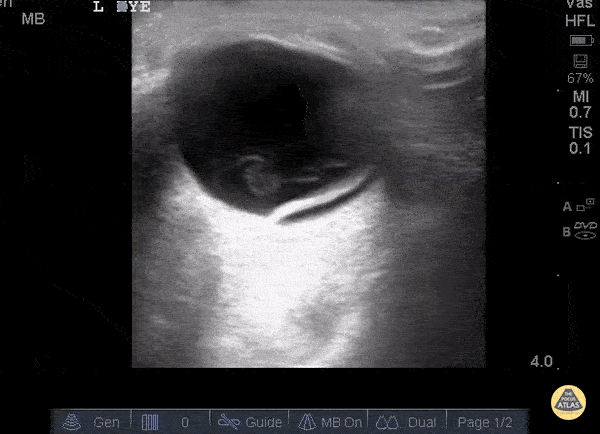
Retinal Detachment
Here a hyperechoic linear density is seen arising from the location of the fundus, indicating retinal detachment. Posterior vitreous detachment and vitreous hemorrhage can look similar to retinal detachment. Given the imminent risk of blindness in these conditions it is essential to identify them as soon as possible. POCUS is an excellent way to do so given the time and skills required to perform a proper fundoscopic exam. Literature has shown sensitivity for this test to be 97-100% and specificity 83-100%. So next time ask yourself... is your fundoscopic exam that good?
Sukh Singh, MD
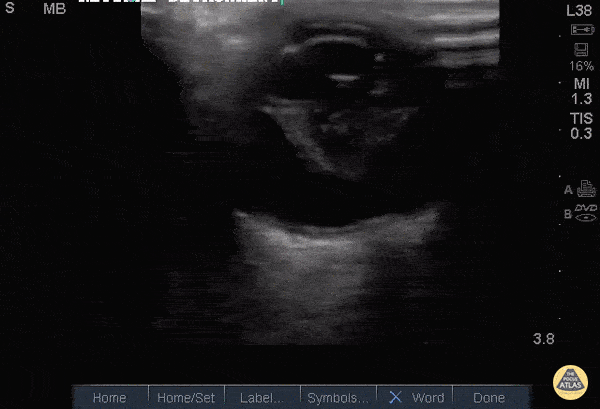
Retinal Detachment with Vitreous Hemorrhage
34 y/o M with acute, atraumatic, painless, complete vision loss in the right eye x3 days, with an eye exam showing opacification of the right pupil and no light/dark perception. Ocular POCUS revealed a complete retinal detachment (RD) with a classic funnel shape. The funnel shape is caused by strong attachments of the retina to the optic nerve posteriorly, and to the ora serrata anteriorly.
POCUS has been shown to have sensitivity 91-100% and specificity 68-96% for RD.
In this image, the hyperechoic area within the funnel suggests an associated vitreous hemorrhage (VH), 30% of which are caused by retinal tears (RT). In fact, in patients with fundus-obscuring VH like our patient, 67% and 39% will have an associated RT or RD, respectively.
Dr. Theodore J. Segarra, Dr. Stephanie Garcia, Dr. Nayla Delgado-Torres. SUNY Downstate/Kings County Emergency Medicine.
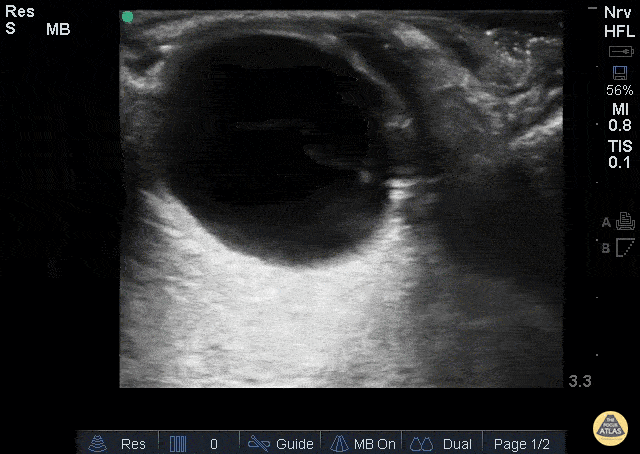
Vitreous vs. Retinal Detachment
A 44 year old man came to ED with a shimmering effect in his left eye and unilateral temporary painless visual disturbance. He had previously been treated for a retinal tear.
Ocular PoCUS shows a frond-like linear structure lifting away from the posterior surface of the globe.
Posterior vitreous detachment (PVD) was suspected while retinal detachment (RD) was also considered. PVD was confirmed by the specialist team and the patient was treated conservatively.
Dr. Cian McDermott, Emergency Physician - University Hospital Geelong, Australia
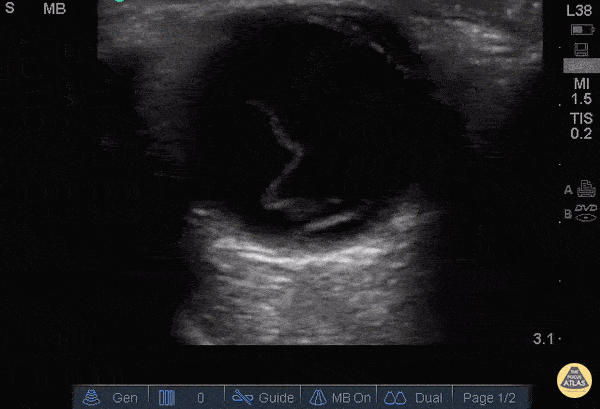
Retinal Detachment
65 y/o F PMH DM with sudden onset flashes of light and floaters followed by progressively worse blurred vision in her right eye. She has history of cataracts surgery as well as DM retinopathy. POCUS of affected eye shows a prominent hyper-echoic linear density floating freely above the posterior fundus as shown.
Retinal Detachment is considered one of few emergencies whereby the retina becomes detached from the choroid. Once separated from the choroid’s blood supply, retinal ischemia ensues which can result in complete blindness in the affected eye. Salvage of such a potentially devastating injury relies on quick and efficient diagnosis with subsequent referral to definitive care.
Bedside ultrasound has been shown to be 100% sensitive as a screening tool for RD [AEM 2010 Sep;17(9):913-7]. Have patient close eye and place liberal amount of gel either directly over eye or atop a tegaderm dressing. Use a linear probe and scan eye in axial plane to reveal findings demonstrated above.
Dr. Eric Roseman - Kings County Emergency Medicine

Retinal Detachment
Retinal detachment in a patient with 1 day of a right sided visual field cut.Literature has shown sensitivity for this test to be 97-100% and specificity 83-100%. So next time ask yourself... is your fundoscopic exam that good?
Dr. William Scheels








